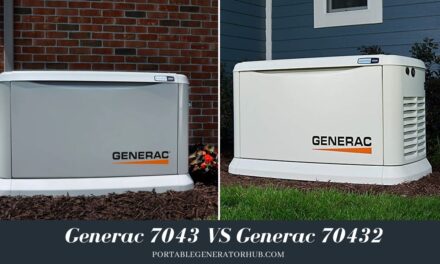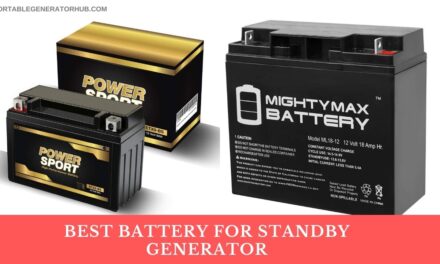
No part of the world is safe from natural disasters. Earthquakes, floods, tornadoes, hurricanes, ice storms, and electrical storms could occur anywhere, anytime. And when they do, they could take down the electrical grids. Depending on how serious they are, you could be out of power for hours, days, weeks, or months.
Of course, there are many portable generators but they usually aren’t able to power all the electrical appliances in homes. Imagine having a generator that can only power your fans, lights, TV sets, and computers.
How will you cope with the lack of air conditioner, refrigerator, microwave oven, dishwasher, water heater, and other power-consuming appliances?
If the outage lasts for only a few days, you could be able to cope without those appliances. But what happens if the power outage lasts for weeks? Life will be unbearable without those electrical appliances.
That’s why every home needs a standby generator that can power all its electrical appliances. Before explaining how to install a standby generator, we have listed the factors to consider in your choice of a standby generator.
Choosing a Standby Generator:
We believe that if you purchase the wrong generator, installation cannot correct the mistake. That’s why you need to factor in the points below.
1. Your Home Owners Association (HOA) Regulations
In many areas, HOAs have recommendations and regulations on standby generators. Some generators are prohibited in some areas. If you purchase a generator that is banned, you may not be able to install it.
Of course, you’ll end up returning it, but the additional cost of the reverse logistics will definitely be on you. So, it is better to get it right from the beginning.
2. How Much Power do You Need?
Every generator has its power generating capacity, which is usually in watts and kilowatts. You could mistakenly buy a generator that is not powerful enough for all your appliances.
That will be a costly mistake. On the other hand, you could buy a generator whose capacity is much more than you need. You’re probably wondering why that’s a problem.
Generators come in various sizes and generating capacities and their capacity determines their cost. The higher the generating capacity, the higher the cost. So, a 20KW generator will cost you more than a 12KW generator and it will cost less than a 22KW.
The question is if a 20KW generator can easily power all your appliances and still have some extra watts, why should you buy a 22KW that costs more? The additional cost will be a total waste of money. So, how will you know how much power you need?
It’s quite simple. Just list out all the electrical appliances in your home. Check how much power each of them consumes. Add the power together.
Get a generator that can meet up and still have extra power. For instance, if your total power consumption is 18.5KW, you’re good with a 20KW generator. Why can’t you just buy an 18.5KW generator? You may purchase another electrical appliance in the future.
If your generator is already working at full capacity, there’ll be no power for the new appliance, except if you have to substitute the new appliance with another one. Also, putting 100% load on your generator will shorten its lifespan significantly.
While listing out the power consumption of every appliance, some may be stated in Amps and not watts. You can easily convert it by multiplying the amps to its voltage, which is usually 120V in the United States.
3. Consider The Fuel Type
Generators run on gasoline, diesel, propane, or natural gas. We don’t like gasoline generators because gasoline is highly volatile and it gives off a lot of harmful gases like carbon monoxide.
Also, you’ll need a big tank to store gasoline. The longer it stays in the storage tank, the more it will reduce in quantity.
Diesel is better than gasoline because it is not so volatile. Unfortunately, it also gives off harmful emissions. Propane and natural gas are our best choices. So, we’ll advise that you choose a generator that runs on propane or natural gas.
4. Automatic Generators Are More Convenient
Many automatic generators work with an automatic transfer switch that senses an outage and signals the gen-set to start up. This does not require human intervention. The generator starts the moment a power outage occurs.
This type of generator is better and more convenient than generators that you have to start manually. Imagine a situation where a power outage occurs in the night when everyone is already asleep.
You’ll have to get out of bed to start your generator. With an automatic generator, you don’t have to lift a single finger. You may not even know that the power source has changed. Therefore, we recommend an automatic generator.
5. Consider The Noise Level
You must consider the comfort of your neighbors. Don’t go for a generator that is too noisy except if you live in a countryside ranch. If you install it far away from your home because of noise, it may be closer to another house.
Secondly, installing it very far from your home will gulp more piping, raising the installation costs for you. Choose a generator with a low noise level.
How to Install a Standby Generator? 6 Steps
Before discussing the installation of a generator, we’d like to sound a note of warning to people who prefer to install it themselves. If you’re not an expert in the field, don’t venture into it! Think of all that’s involved in the installation of a generator.
There are electrical connections and plumbing works, and there are important codes that should not be violated. Do you think you can handle all that?
A lot can go wrong. Wrong electrical connections could cause accidental electrocution or fire. Poor plumbing works could lead to gas leaks. You already know what could happen if carbon monoxide finds its way into your home.
So, it is better to hire an expert. If you’re planning to save installation costs by doing the installation yourself, we’ve got news for you. Professionals usually charge more to clean up someone’s mess than to do a new job. They’ll need to first investigate your work to be sure it’s okay.
Now that we’ve got that out of the way, let’s discuss the steps involved in installing a standby generator.
Step 1 – Cast a concrete pad where you intend to place the generator. The pad has to be very strong and level. Remember that generators vibrate heavily. If you don’t place it on a strong concrete pad, you’ll feel the vibration in your home.
Step 2 – Wait for 48 hours for the pad to dry up. The pad has to be at least 5 feet from your home. If the generator is too near, its noise may be too high. Another reason to place the generator far away is its fumes. If the generator is too near, fumes may enter your home.
Step 3 – Place the generator on the pad and fasten it with steel bolts. If your generator is a heavy-duty machine, it will require heavy machinery to do the job. That’s another reason why you should let professionals handle it.
Step 4 – Hire a plumber to connect a gas line to the generator. The farther the generator to your house, the longer the pipe will be. So, to save cost, don’t place your standby generator too far from your house.
Step 5 – A line-voltage cable should be run by an electrician. The cable links the generator to your house. Only an expert will know the best cable for the job. If you use a cable that is not strong enough, it could get burned after a couple of hours.
Step 6 – You need to install the automatic transfer switch near the electrical meter. The transfer switch is linked to the power inlet at one end and the load center at the other. It takes power from the generator and sends it to the load center that powers your house.
The second function of the automatic transfer switch is to send a signal to the generator whenever a power outage occurs. Once the generator receives the signal, it starts off.
When the electricity from the grid is restored, the transfer switch sends another signal to the generator and the generator stops working. Before the transfer switch sends the signal, it would have stopped sending power to the load center.
Precaution:
Don’t try to run the voltage cable or wire your home on your own if you are not a professional. A lot of things can go wrong. Don’t risk your life and the lives of your family. Don’t depend on YouTube videos. It is better and smarter to hire an experienced electrician for the job.
Points to Note
Most automatic standby generators run a self-diagnostic test every week. This usually runs for about 15 to 20 minutes.
So, even if you don’t use your generator regularly, it will still be in good condition. When the generator stops coming on automatically, the transfer switch may be faulty. Start the troubleshooting from the switch.
Final Word
Ensure you follow the buying tips for the purchase of your generator. You’ll end up with a good buy. Also, let professionals handle the installation of your generator. It will come with a huge installation cost, but it will pay off in the long run.





